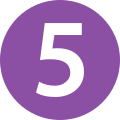 Station Sign (Line 5) | |||||||||||||||||||||
| Korean name | |||||||||||||||||||||
| Hangul | 올림픽공원역 | ||||||||||||||||||||
| Hanja | |||||||||||||||||||||
| Revised Romanization | Ollimpikgongwon-yeok | ||||||||||||||||||||
| McCune–Reischauer | Ollimp'ikkongwŏn-yŏk | ||||||||||||||||||||
| General information | |||||||||||||||||||||
| Location | 89 Bangi-dong, Songpa-gu, Seoul [1] | ||||||||||||||||||||
| Coordinates | 37°30′58″N127°07′51″E / 37.516143°N 127.130871°E | ||||||||||||||||||||
| Operated by | Seoul Metro | ||||||||||||||||||||
| Line(s) | Line 5 Line 9 | ||||||||||||||||||||
| Platforms | 3 | ||||||||||||||||||||
| Tracks | 4 | ||||||||||||||||||||
| Construction | |||||||||||||||||||||
| Structure type | Underground | ||||||||||||||||||||
| Key dates | |||||||||||||||||||||
| March 30, 1996 [1] December 1, 2018 [2] | Line 5 opened Line 9 opened | ||||||||||||||||||||
| Services | |||||||||||||||||||||
| |||||||||||||||||||||
Olympic Park is a subway station on Seoul Subway Line 5 and Seoul Subway Line 9 in Songpa District, Seoul. [3] [1] [4] [5] It became an interchange with Subway Line 9 on December 1, 2018. [2]



